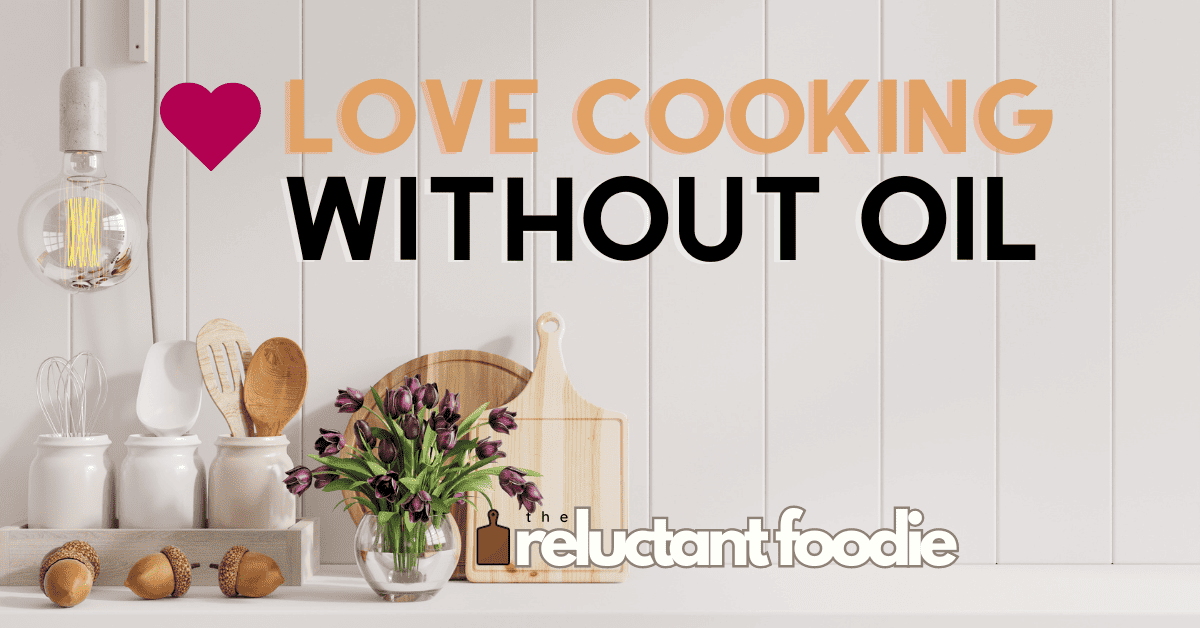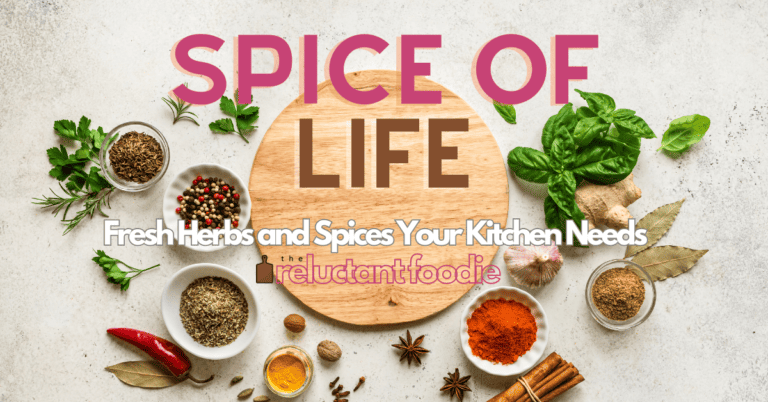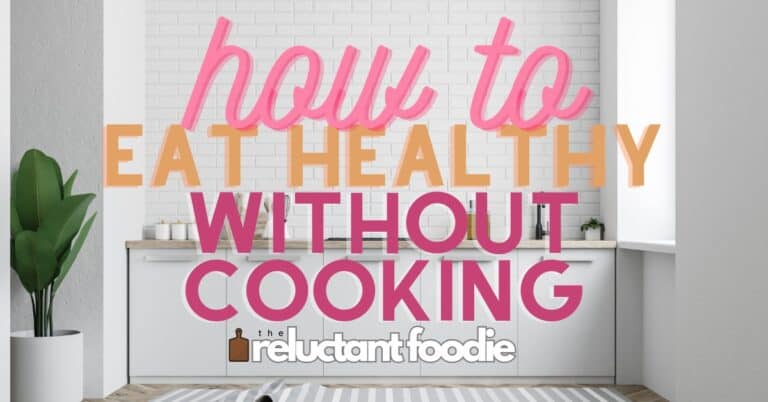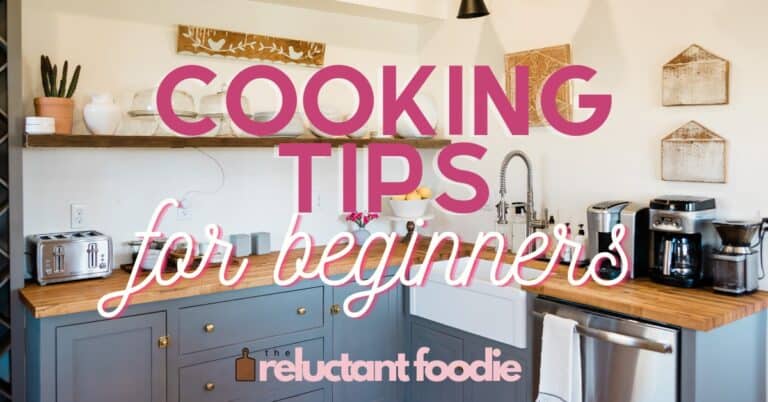Love Cooking Without Oil: Easy Tips for Eating Oil-Free
That’s right, I said it: cooking without oil. In a million years, I never thought I would cook without oil, let alone ENJOY IT. But I do. Lowering fat has made a massive positive change in my health. I have done this by cooking without oil. Let me show you how it’s done.
This blog post will explore essential kitchen tools, creative oil substitutes, and mouthwatering recipes that make embracing a healthier, oil-free lifestyle EASY.
New to Cooking? Check out my Easy and Healthy Cooking Tips for Beginners.
Key Takeaways
- Oil-free cooking has many health benefits and can be easily achieved with the right kitchen tools.
- Get creative with oil substitutes like water, broth, fruit purees, nut milk, and nut butter to make delicious meals without oil!
- Transitioning to an oil-free lifestyle is possible by reducing consumption gradually and experimenting with recipes.
- Easy Recipes are below!
The Benefits of Cooking without Oil
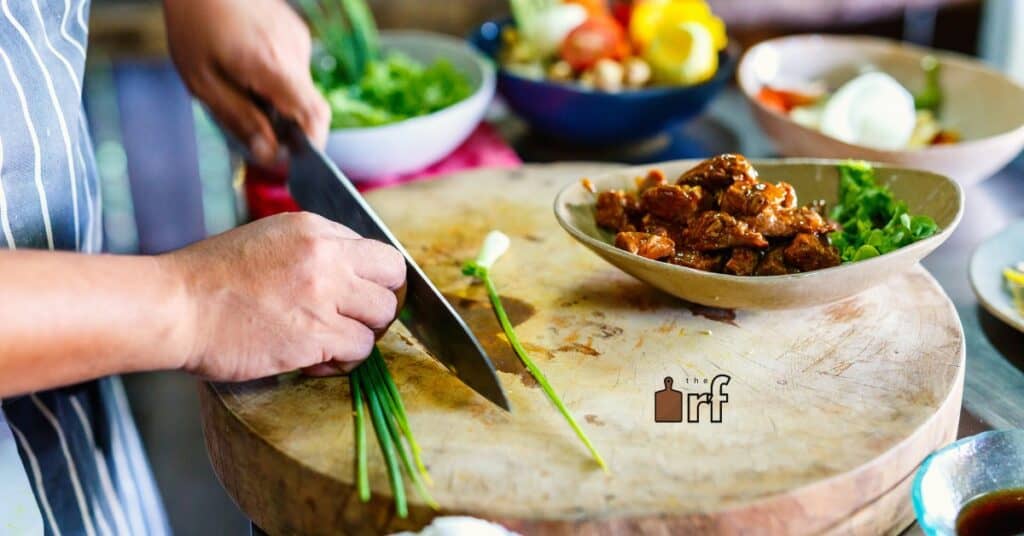
Many of us have grown accustomed to oils like olive and coconut oil and believe they are necessary for flavorful food. WRONG. Not only does oil mask the true flavor of our foods, but…
Did you know plants have all the dietary fat our bodies need, including healthier fats and lower saturated fat?
YES for real! Even better, transitioning to a low-fat, oil-free lifestyle has numerous benefits, such as improved heart health, weight loss, and digestion.
Eliminating oil from your diet allows you to focus on consuming whole foods rich in nutrients and naturally low in fat. A low-fat, plant-based diet promotes a healthy weight and dramatically reduces the risk of chronic diseases.
This doesn’t mean you must always be oil-free or give up animal protein.
But think about a typical American meal: meat cooked in oil or another fat, a side dish with cheese, bread with butter, and a dessert made with milk and butter. It’s fat on top of fat—meal after meal, day after day. This becomes hard on our bodies and leads to chronic illness.
Just a few days of oil-free cooking per week can improve your health.
So, let’s uncover the tools and techniques to make it a reality for you, too.
Essential Kitchen Tools for Cooking without Oil
Mastering the art of oil-free cooking requires the right tools. Non-stick cookware, air fryers, silicone bakeware, and parchment paper are essential for creating delicious and healthy meals without oil.
Let’s explore each in detail.
Non-Stick Cookware
Non-stick cookware, such as stainless steel, enamel-coated cast iron, or ceramic pans, is perfect for oil-free cooking, as it helps prevent ingredients from sticking to the surface.
These non-stick options make cooking without oil a breeze and ensure your meals are healthier with less fat from added oils.
To maintain the non-stick surface and ensure the longevity of your cookware, follow these tips:
- Always hand-wash your pans.
- Avoid using harsh chemicals or abrasive scrubbers.
- Do not heat the pans empty or above medium heat for non-stick-coated pans, as that can release toxic fumes. Stainless steel does allow for a higher heat.
For more cookware info see my article on Ceramic vs Stainless Steel Cookware!
Air Fryers
Air fryers have revolutionized oil-free cooking by using hot air to cook food, providing a healthier alternative to deep frying. Some examples of foods you can cook in an air fryer include:
- Crispy asparagus with salmon
- Golden French fries
- Juicy breaded chicken
- Fluffy pancakes
Circulating hot air around the food, air fryers create a crispy outer crust devoid of the added fat and calories from oil. They make it super easy to embrace an oil-free lifestyle and open up a world of possibilities for creating delicious and healthy meals in the comfort of your kitchen.
Silicone Bakeware & Parchment Paper
Silicone bakeware and parchment paper are essential tools for oil-free baking. They provide a non-stick surface, ensuring your baked goods don’t stick to the pan and making cleaning up easier afterward.
Using silicone bakeware for oil-free cooking offers numerous advantages, such as:
- Even baking
- Easy cleaning
- No odor or flavor transfer
With these essential tools in your kitchen arsenal, oil-free baking becomes a delightful and hassle-free experience.
Creative Oil Substitutes for Different Cooking Techniques
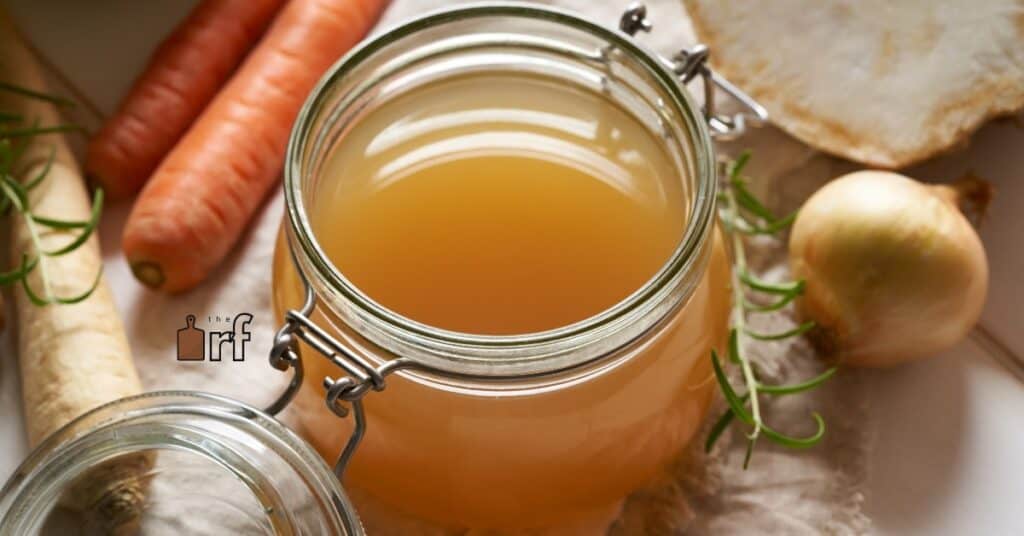
Having explored the tools needed for cooking without oil, we can get creative with oil substitute options. Depending on the cooking technique, you can replace oil with a variety of alternatives, such as:
- water
- broth
- fruit purees
- nut butter
CLICK HERE for Super Duper Easy Healing Broth Recipe!
Using Oil-Free Substitutes
What you use to substitute oil can depend on your cooking method.
Sauteing & Stir-Frying
When it comes to sautéing and stir-frying, you can begin searing meats and cooking veggies without oil and replace oil with:
- water
- vegetable broth or stock
- coconut aminos
The no-oil sauté method is healthier and adds a new dimension of flavor to your dishes.
For successful sautéing and stir-frying without oil, a small amount of water or broth (about 1 to 2 tablespoons) should be used to keep the ingredients moving in the pan to prevent burning. Monitor your food closely and keep the temperature at medium or below to prevent burning.
Baking
Baking without oil is not only possible but also delicious. Try replacing oil with:
- Applesauce
- Mashed bananas
- Nut butter
- Fruit purees
These substitutes add moisture and provide a healthier alternative to oil.
Using parchment paper or silicone bakeware to prevent sticking and ensure even baking can smooth your transition to oil-free baking.
Roasting
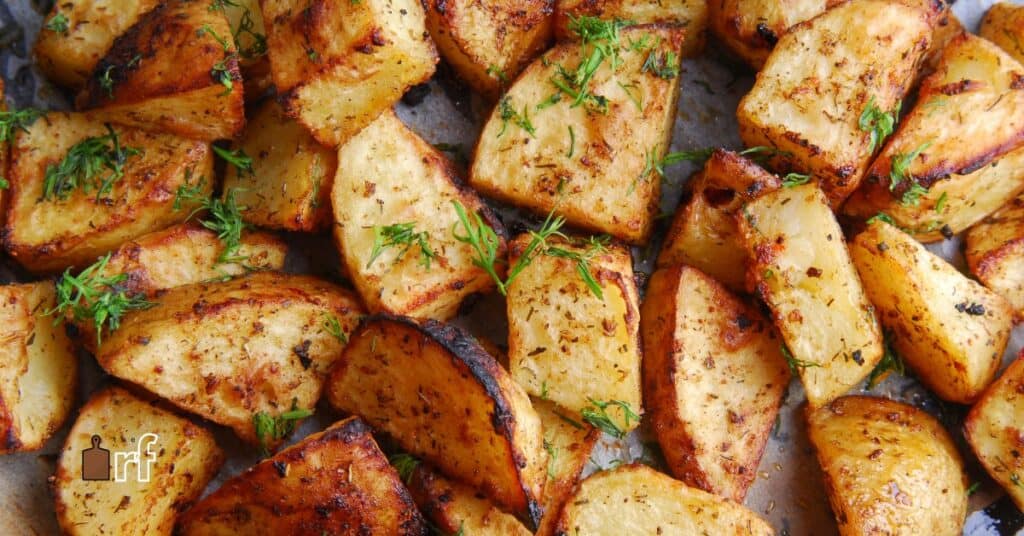
Roasting vegetables without oil is simple, healthy, and just as tasty. Lightly mist your vegetables with water or veggie broth, season them with your favorite spices and herbs, and cook them “low and slow.” The result? Perfectly roasted vegetables without the added fat and calories from oil.
To add moisture to your roasted vegetables, try using:
- lemon juice
- veggie broth
- aquafaba (chickpea liquid)
- maple syrup
Experiment with different seasonings and ingredients to find your perfect oil-free roasting combination.
Frying
Frying without oil may seem like a challenge, but with the proper techniques and tools, it’s entirely possible. You can achieve crispy textures without needing oil by using air fryers, oven baking, or even coating your food in breading.
To achieve a crispy coating on your food, follow these steps:
- Dip your food in a wet mixture, such as egg replacer or nut milk.
- Coat the food in potato starch or gluten-free flour.
- This will help the breading stick and create the desired crunch, all without the added fat and calories from oil.
CLICK HERE for my Oil-Free Lemon Chicken Recipe that even my teens love!
Oil-Free Salad Dressings and Sauces
This is where the magic happens!
You can craft delicious oil-free dressings and sauces – even mayo or pesto! – that will elevate your meals. Grab a blender or food processor and use ingredients like mashed avocado, soaked cashews, or cannellini beans.
Whether drizzling them over a salad or using them as a dipping sauce, these oil-free options will impress your taste buds.
CLICK HERE for Easy, Oil-Free, Dairy-Free Cashew “Cheese” Sauce!
Transitioning to Cooking Without Oil: Tips and Advice
Although switching to an oil-free lifestyle might seem like a lot, a few helpful tips can make the transition smooth and enjoyable. Here are some steps to follow:
- Start by gradually reducing your oil.
- Try oil-free cooking once a week.
- As you become more comfortable, increase the frequency of your oil-free meals.
By following these tips, you can successfully transition to an oil-free lifestyle.
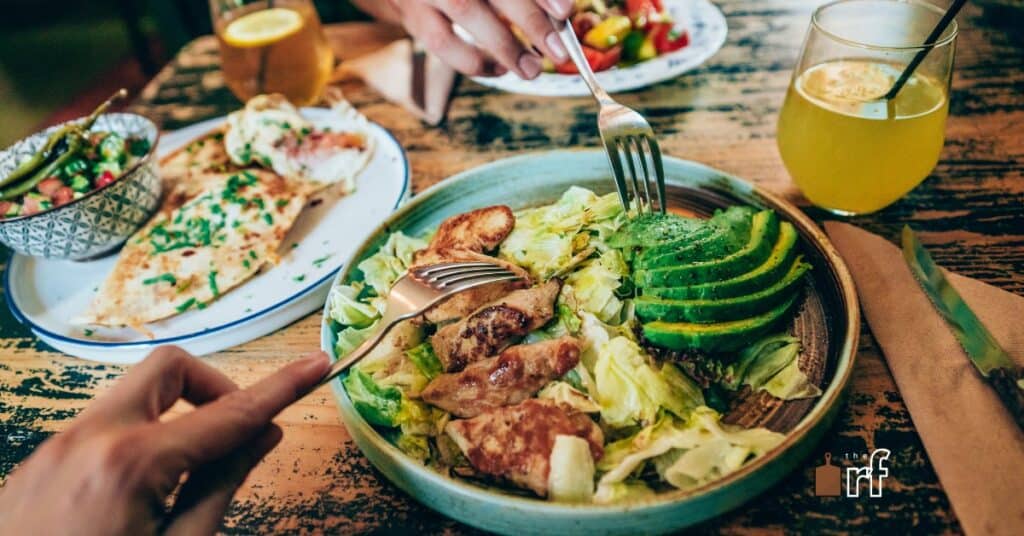
Equipped with the knowledge and tools for oil-free cooking, it’s time TO EAT!
New to Cooking? Check out my 10 Essential Cooking Tips for Beginners.
Frequently Asked Questions
Is it Possible to Cook Without Oil?
Cooking without oil is possible, and there are healthier alternatives such as water, vegetable broth, cooking wine, vinegar, or soy sauce. These allow you to eliminate the risk of using harmful oils and enhance your dish with more flavor!
What Happens if You Cook Without Oil?
Cooking without oil can lower calorie intake and improve heart health, making food taste more authentic and delicious. That’s right! Oil can mask or change the flavors of your food, and often, you are tasting the oil and not your fresh ingredients.
Is it Okay to Cook Meat Without Oil?
It’s perfectly okay to cook meat without oil, as you can use low heat to prevent sticking and a splash of broth or stock. Remember: meat and other proteins have fat already!
What Happens if You Cook Vegetables Without Oil?
Cooking vegetables without oil is an easy and healthy alternative to roasting them with oil. The end product may be a bit drier, but adding a small amount of liquid after cooking can increase flavor and add complementary notes to the dish.
What are Some Alternatives to Oil for Sauteing and Stir-Frying?
If you’re looking to switch things up, water, vegetable broth, cooking wine, or coconut aminos are all excellent alternatives to oil when sautéing and stir-frying.

